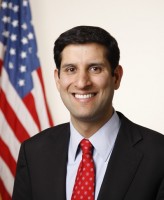Late last week, the Project on Government Oversight‘s Danielle Brian took a little umbrage at a Huffington Post piece by former U.S. Deputy Chief Technology Officer Beth Noveck, who had been implementing the Obama Administration’s Open Government Initiative until she recently returned to New York Law School.
Brian’s piece suggests a slight schism in the transparency community, between what I believe are the “insider” and “outsider” camps. Brian leaves to the end a crucial point: “[C]an’t the two camps in the open government world peacefully co-exist? There’s just too much work to be done for us to get bogged down in denigrating each others’ agendas.” They most certainly can.
Noveck was a bit dismissive of the open government movement as perceived by much of the transparency community. “Many people, even in the White House,” she wrote, “still assume that open government means transparency about government.” Actually, Noveck continued, open government is “open innovation or the idea that working in a transparent, participatory, and collaborative fashion helps improve performance, inform decisionmaking, encourage entrepreneurship, and solve problems more effectively. By working together as team [sic] with government in productive fashion, the public can then help to foster accountability.”
Visualize the difference between these two approaches: open government as a tool for public oversight and open government as a tool for public participation. When open government is about public oversight, the wording connotes the public looking down from above on the work its servants are doing. When open government is about collaboration, the public is at best an equal partner, allowed to participate in the work of governing. Noveck’s unfortunate language choice treats accountability as a kind of dessert to which the public will be entitled when it has donated sufficient energies to making the government work better.
The administration’s December 2009 open government memorandum predicted this divide. In calling for each agency to publish three “high-value data sets,” it said:
High-value information is information that can be used to increase agency accountability and responsiveness; improve public knowledge of the agency and its operations; further the core mission of the agency; create economic opportunity; or respond to need and demand as identified through public consultation.
As I noted at the time, it’s a very broad definition.
Without more restraint than that, public choice economics predicts that the agencies will choose the data feeds with the greatest likelihood of increasing their discretionary budgets or the least likelihood of shrinking them. That’s data that “further[s] the core mission of the agency” and not data that “increase[s] agency accountability and responsiveness.” It’s the Ag Department’s calorie counts, not the Ag Department’s check register.
Noveck wants us to put the calorie counts to use. Brian wants to see the check register.
There is no fundamental tension between these two agendas. Both are doable at the same time. The difference between them is that one is the openness agenda of the insider: using transparency, participation, and collaboration to improve on the functioning of government as it now exists.
The openness agenda of the outsider seeks information about the management, deliberation, and results of the government and its agencies. It is a reform (or “good government”) agenda that may well realign the balance of power between the government and the public. That may sound scary—it’s certainly complicates some things for insiders—but the “outsider” agenda is shared by groups across the ideological and political spectra. Its content sums to better public oversight and better functioning democracy, things insiders are not positioned to oppose.
I think these things will also reduce the public’s demand for government, or at least reduce the cost of delivering what it currently demands. But others who share the same commitment to transparency see it as likely to validate federal programs, root out corruption, and so on (a point I made in opening Cato’s December 2008 policy forum, “Just Give Us the Data!”) There are no losers in this bet. Better functioning programs and reduced corruption are better for fans of limited government than poorly functioning programs and corruption.
Forward on all fronts! The existence of two camps is interesting, but not confounding to the open government movement.

 Here’s a quick excerpt from an interesting press release sent out over
Here’s a quick excerpt from an interesting press release sent out over  The Technology Liberation Front is the tech policy blog dedicated to keeping politicians' hands off the 'net and everything else related to technology.
The Technology Liberation Front is the tech policy blog dedicated to keeping politicians' hands off the 'net and everything else related to technology.